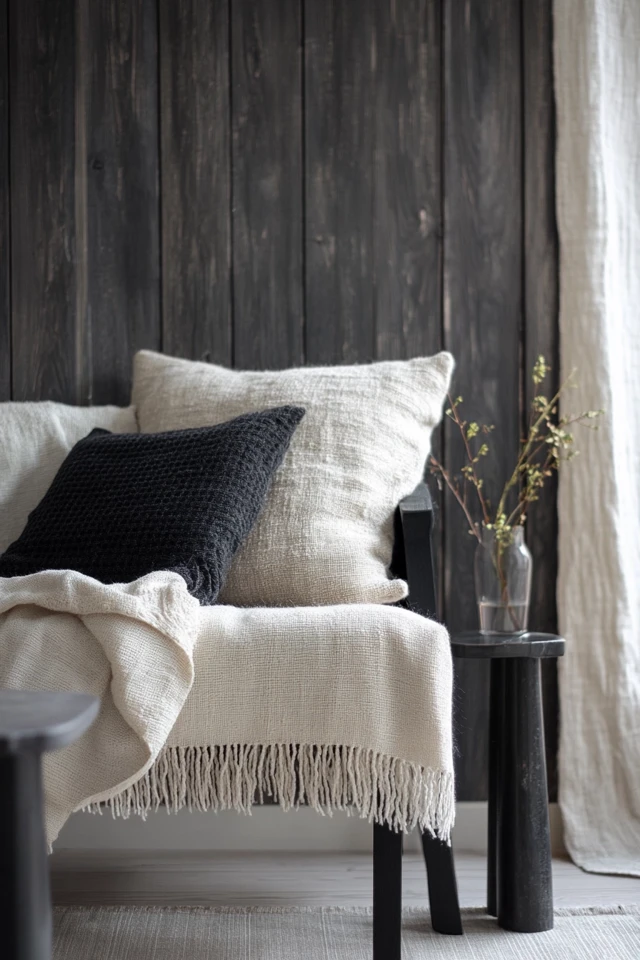Textiles are a key element in creating a cozy, inviting Scandinavian home. From soft wool throws to linen curtains, the right fabrics can add warmth, texture, and personality to your space while staying true to the minimalist, functional aesthetic of Nordic design.
When I first started incorporating Scandinavian textiles into my home, it was a game-changer. A simple addition like a chunky knit throw or a textured rug brought an immediate sense of comfort to my rooms without overwhelming their clean lines. Each layer of fabric turned my space into a sanctuary where I could unwind and feel truly at home.
In this guide, I’ll share tips on how to use textiles to achieve that perfect cozy Scandinavian look, no matter your style or budget.
Why Textiles Are Essential in Scandinavian Design
Benefits of Using Textiles
- Adds Warmth: Soft fabrics counterbalance the cool, minimalist aesthetic.
- Enhances Texture: Layers of textiles create depth and visual interest.
- Encourages Comfort: Plush cushions and blankets invite relaxation.
- Defines Spaces: Rugs and curtains help delineate areas in open-plan layouts.
1. Start with Layered Rugs
Rugs are foundational to Scandinavian interiors, adding warmth and softness to hardwood or tile floors.
How to Use Rugs
- Layer a large natural fiber rug (like jute or sisal) with a smaller wool or cotton rug for added coziness.
- Stick to neutral tones like beige, gray, or white with subtle patterns.
- Use high-pile or shag rugs in living rooms or bedrooms for ultimate comfort.
Styling Tip:
A light gray wool rug paired with a smaller white faux-sheepskin rug creates a textured, Nordic-inspired look.
2. Add Throw Blankets for Hygge
Throw blankets are quintessential for creating hygge (coziness) in Scandinavian design.
How to Style Throws
- Choose chunky knit, wool, or cashmere blankets in neutral tones or muted colors.
- Drape them over sofas, armchairs, or the end of a bed.
- Layer multiple throws with varying textures for extra warmth.
Example:
A cream-colored knit throw on a gray Scandinavian sofa adds both style and comfort to your living room.
3. Use Linen and Cotton Bedding
Scandinavian bedrooms prioritize simplicity and comfort, and textiles play a central role.
Bedding Tips
- Opt for linen or cotton bedding in soft, natural hues like white, beige, or light gray.
- Layer with a textured duvet cover, quilted throw, or lightweight blanket.
- Avoid heavy patterns—stick to simple, minimalist designs.
Styling Tip:
Mix crisp white linen sheets with a beige waffle-knit blanket for a relaxed yet elegant Nordic vibe.
Picture Gallery
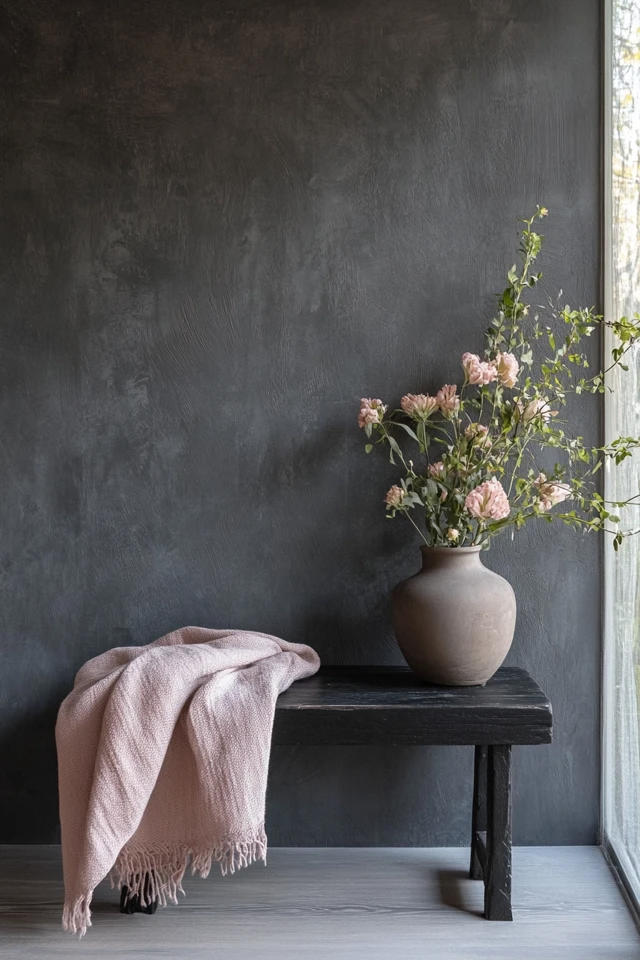
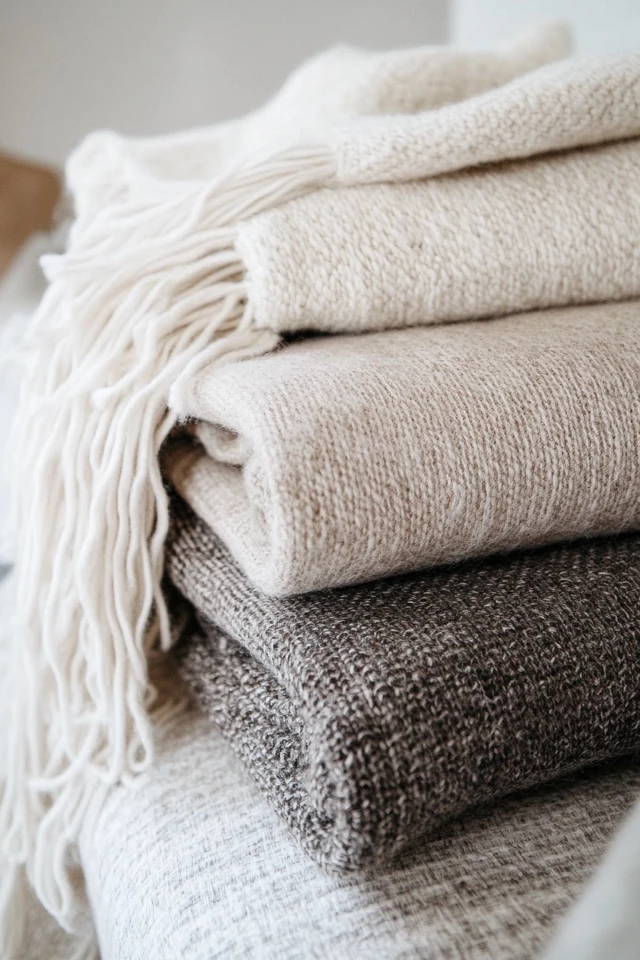
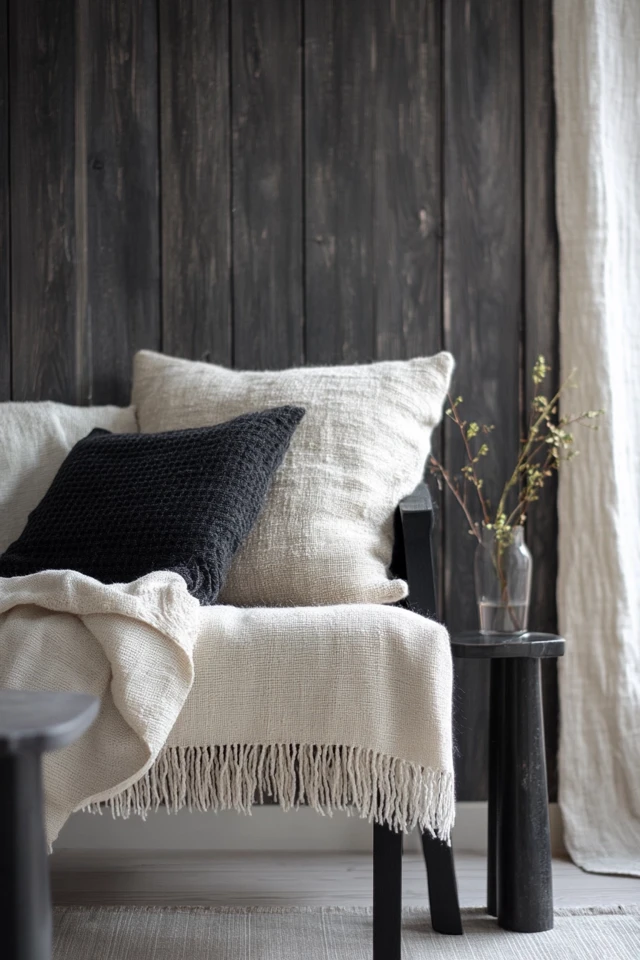
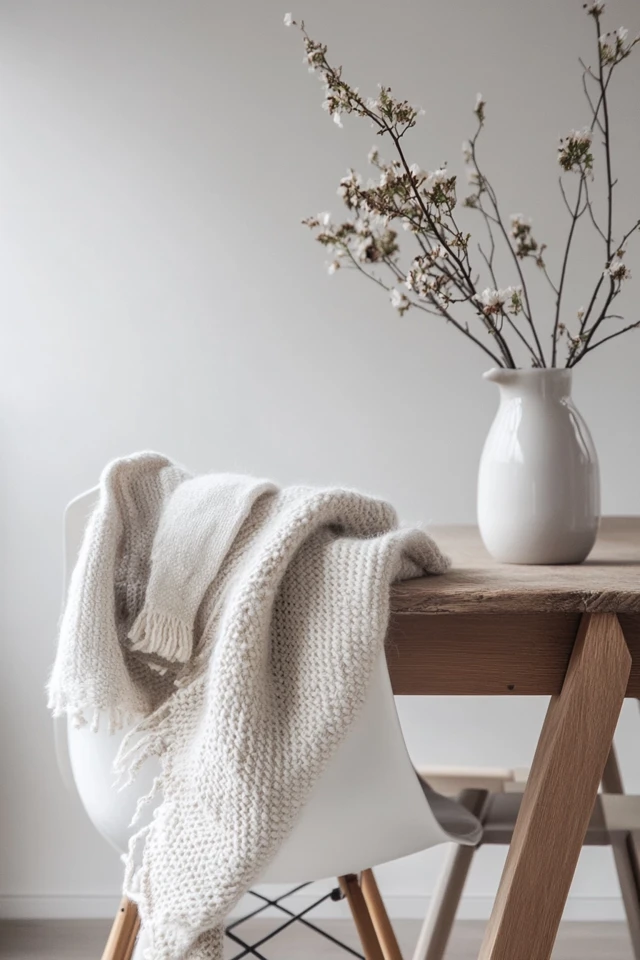
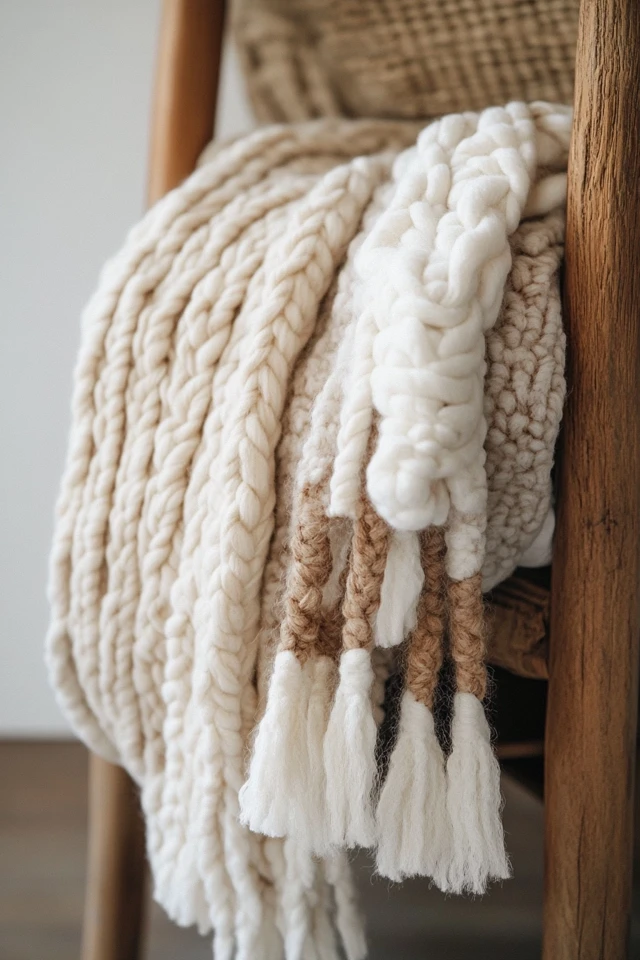
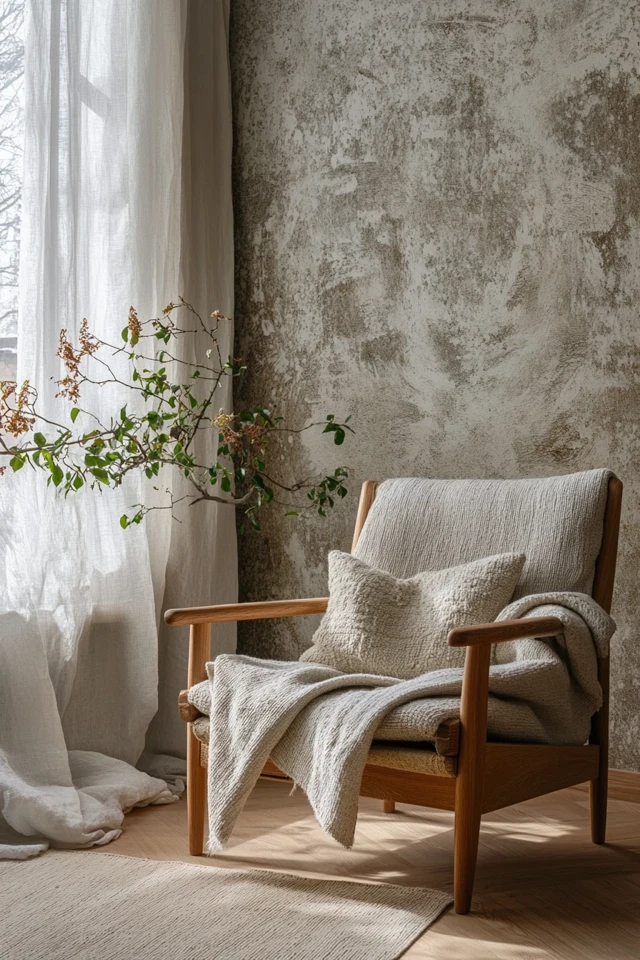
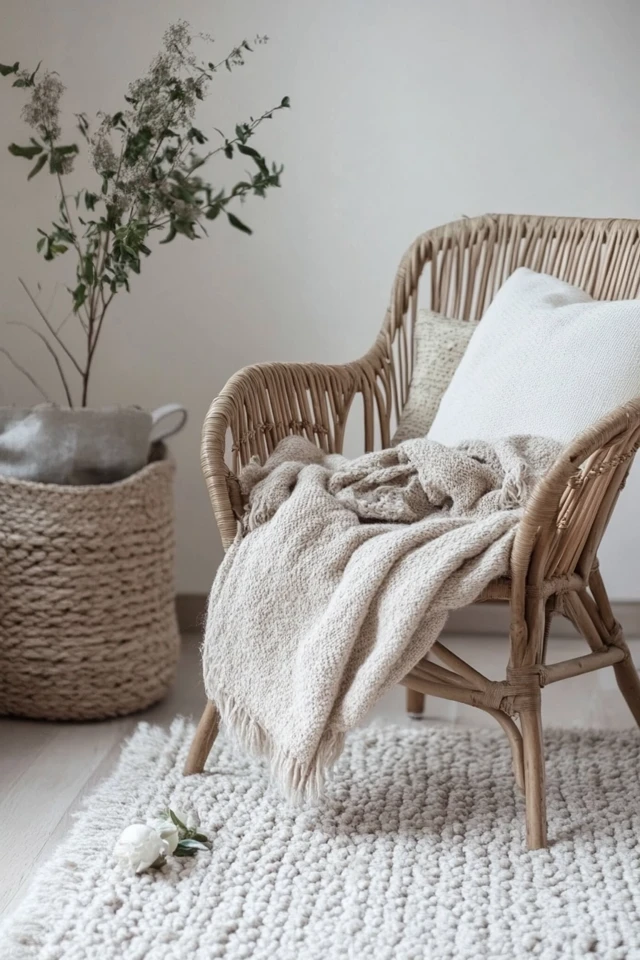
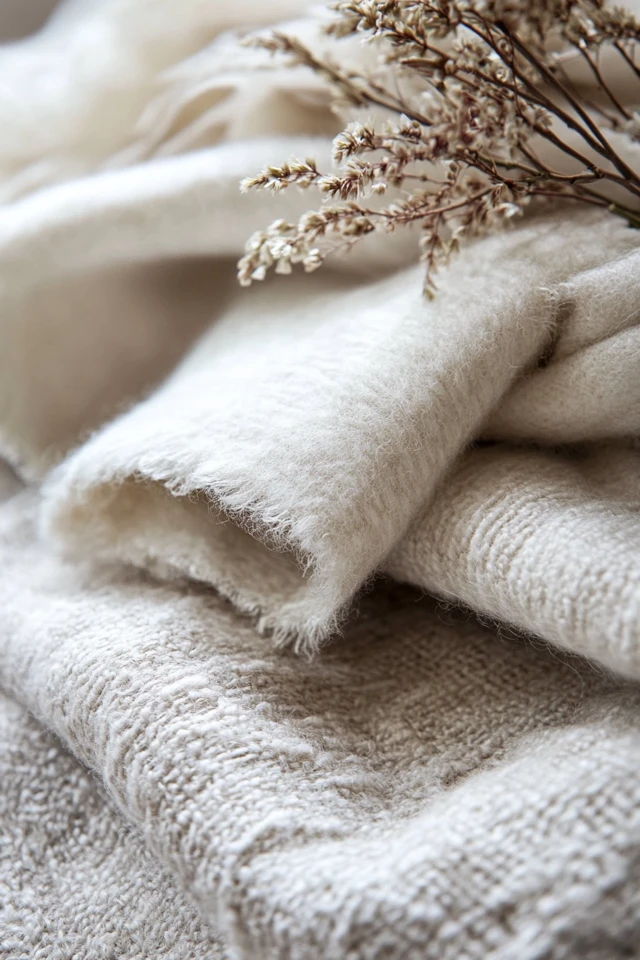
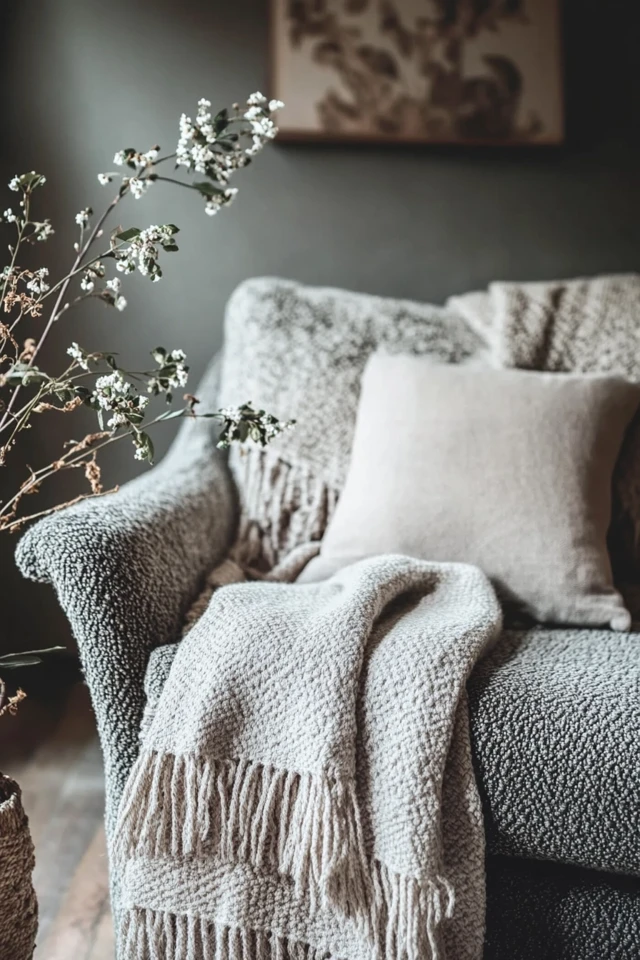
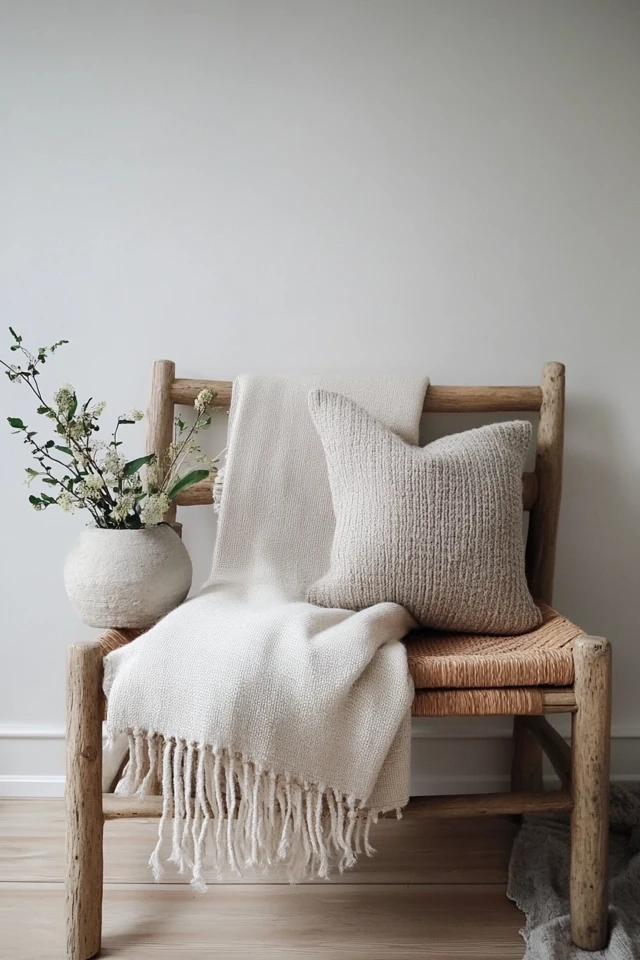
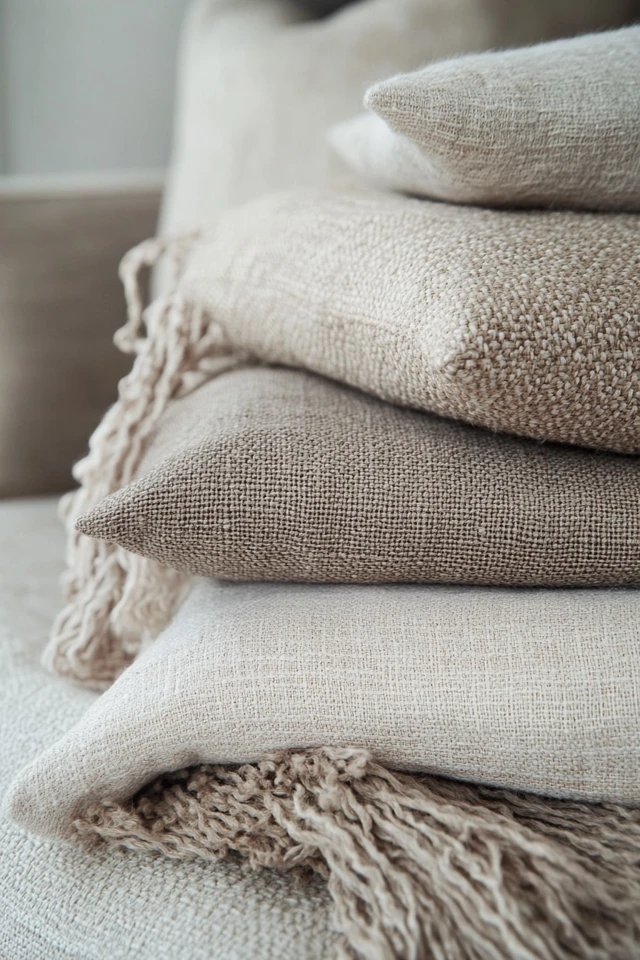
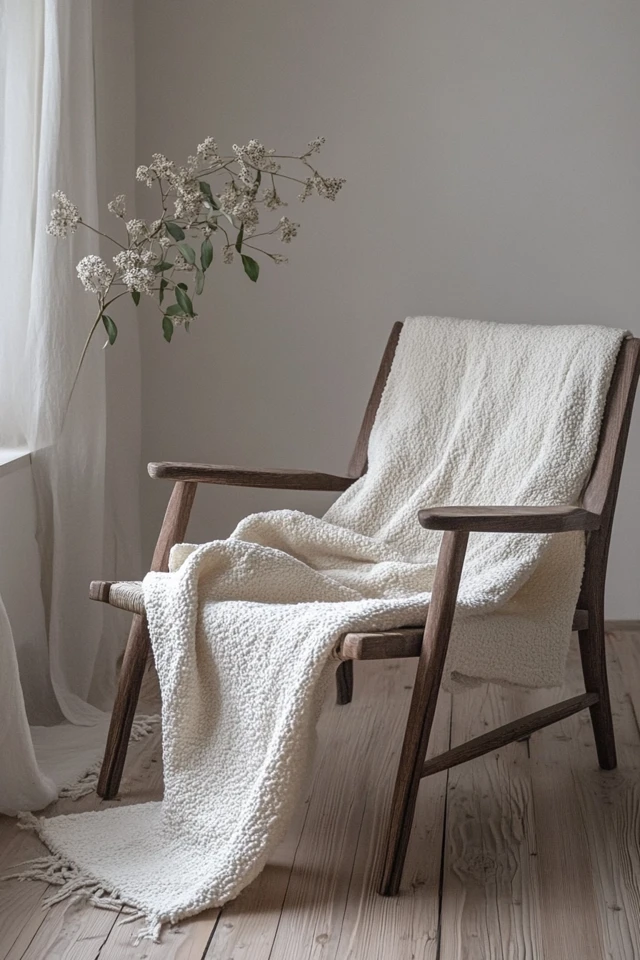
4. Incorporate Cushions with Texture
Throw pillows add both comfort and dimension to Scandinavian interiors.
Cushion Ideas
- Choose pillows in natural fabrics like wool, linen, or cotton.
- Mix textures—pair smooth linen cushions with knitted or woven designs.
- Stick to a cohesive color palette with neutral tones and subtle patterns.
Example:
A set of gray and beige linen pillows with a single chunky knit pillow creates a cozy yet understated look on a Scandinavian sofa.
5. Hang Sheer or Linen Curtains
Window treatments in Scandinavian design are minimal yet functional, letting in natural light while adding softness.
Curtain Tips
- Use sheer fabrics like voile or lightweight linen for an airy, light-filled space.
- Stick to neutral tones like white, cream, or soft gray.
- Avoid heavy or overly ornate curtains.
Styling Tip:
Pair white linen curtains with black curtain rods for a subtle yet striking Scandinavian contrast.
6. Introduce Faux Fur and Sheepskin
Faux fur and sheepskin throws are iconic in Scandinavian interiors, adding warmth and texture.
How to Use Them
- Drape a faux-sheepskin throw over a dining chair or bench.
- Layer a faux-fur rug under a coffee table or next to your bed.
- Use small sheepskin accents to soften hard, wooden furniture.
Example:
A white sheepskin draped over a black Scandinavian dining chair creates an inviting, textured look.
7. Focus on Warm, Neutral Tones
Color plays a big role in Scandinavian textiles, with an emphasis on neutral and muted hues.
Best Colors for Textiles
- Whites, creams, and beiges for a light, airy feel.
- Grays and soft browns for depth and balance.
- Muted earth tones like sage green or terracotta for subtle pops of color.
Styling Tip:
A beige wool throw paired with sage green linen pillows adds warmth and interest without disrupting the minimalist aesthetic.
8. Add Texture with Woven Baskets and Poufs
Textiles extend beyond cushions and throws—woven accessories like baskets and poufs can enhance texture in your space.
Ideas for Woven Accessories
- Use wicker or rattan baskets for blanket storage.
- Add a knitted or woven pouf for extra seating in the living room.
- Incorporate jute or sisal baskets for natural texture.
Example:
A knitted gray pouf next to a Scandinavian armchair adds a cozy, functional accent to your living room.
9. Use Table Linens
In Scandinavian dining spaces, textiles extend to the table for a soft, natural look.
How to Style Table Linens
- Use a linen tablecloth or runner in neutral tones.
- Add linen napkins for a sophisticated yet relaxed vibe.
- Pair with ceramic dinnerware and wooden accents for a cohesive look.
Styling Tip:
A beige linen runner paired with white stoneware plates and black cutlery creates a modern Nordic tablescape.
10. Layer Outdoor Spaces with Textiles
Scandinavian coziness isn’t limited to indoors—textiles can transform outdoor areas into inviting retreats.
How to Use Textiles Outdoors
- Add weatherproof cushions and blankets to patio furniture.
- Use an outdoor rug in neutral tones to define the seating area.
- Incorporate lanterns or fairy lights for ambiance.
Example:
A wooden bench layered with striped outdoor cushions and a light gray blanket creates a cozy Scandinavian-inspired balcony.
How to Maintain Scandinavian Textiles
- Choose Durable Fabrics: Opt for high-quality, natural materials like wool, cotton, and linen that age beautifully.
- Stick to a Palette: Keep colors cohesive across rooms for a unified Scandinavian look.
- Rotate with Seasons: Swap heavy wool throws for lightweight linen blankets in the summer.
- Clean Regularly: Vacuum rugs and wash throws or curtains as needed to maintain their freshness.
Conclusion
Using textiles is one of the easiest and most effective ways to bring a cozy Scandinavian feel into your home. From layered rugs to soft throws and woven accents, each fabric adds warmth, texture, and personality to your space.
For me, embracing Scandinavian textiles transformed my home into a sanctuary of comfort and style. Each layer of fabric made the rooms feel more welcoming, creating the perfect balance between function and beauty.
So, explore these ideas and let textiles help you craft a cozy, Nordic-inspired haven in your own home.
FAQ
What textiles are most common in Scandinavian interiors?
Natural fabrics like wool, linen, cotton, and faux fur are staples in Scandinavian interiors.
How do I use textiles to make a space feel cozy?
Layer rugs, add throw blankets and cushions, and incorporate textured fabrics like knits and wovens to create warmth and depth.
What colors work best for Scandinavian textiles?
Neutral tones like white, gray, beige, and muted earth tones are ideal for maintaining a cohesive, minimalist aesthetic.
Can I use patterned textiles in Scandinavian design?
Yes, but keep patterns subtle—opt for simple stripes, grids, or small geometric designs in muted colors.
Where can I find Scandinavian-inspired textiles?
Look for Scandinavian textiles at stores like IKEA, H&M Home, West Elm, and smaller Nordic brands like Ferm Living or Muuto.

